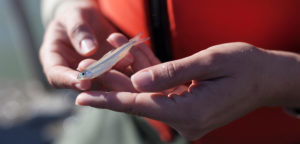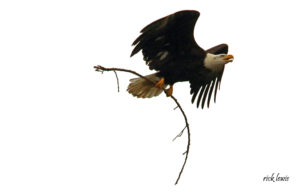In late spring, a thumb-size least tern chick emerges from its egg on Alameda Point. The chick’s eyes are open at birth, and it can walk soon after hatching. Its parents, who shared incubation, also take turns caring for the chick. But this chick, like the others born on this abandoned runway at the shuttered Alameda Naval Air Station, has more than its parents watching out for it. It has a village. Every month (except in summer, when the terns are in residence), volunteers with Golden Gate Audubon’s Friends of Alameda Wildlife Refuge help staff from the U.S. Fish & Wildlife Service (FWS) pull weeds, rake the oyster-shell ground cover, and maintain electric fences that deter predators. According to FWS, nearly the entire California least tern population is “conservation reliant.” And that has been its saving grace.
Conservation measures implemented in the last 30 years have made enough of a difference for the terns that FWS’s five-year review, issued last year, recommends reclassifying the species as threatened rather than endangered, since the number of tern pairs is nearly six times greater than the threshold for down-listing.
California least terns were on the first endangered species list when the act was implemented in 1970. In their breeding range from the Bay Area to Baja, scientists counted a low of 600 pairs in the 1970s, with the decline due primarily to coastal development. However, from 1995 to 2005, protection efforts helped the breeding population grow to about 7,100 pairs. Some are celebrating the population rebound, but others say that could be premature.
“We are concerned about the proposal for down-listing,” says Elizabeth Murdock, Golden Gate Audubon’s executive director. “There is some question whether the current reproductive rates are sustainable for the species.” Although the population continues to rise, the FWS reports that the “level of fledged young per pair has declined and continues on a downward spiral.”
The colony at the proposed Alameda National Wildlife Refuge is essential for the tern’s eventual recovery, says Murdock. It’s among the terns’ most productive breeding sites, and the northernmost colony (except for two small new ones near Grizzly Island and in Pittsburg). But the status of the Alameda refuge has remained in limbo for over a decade while the Navy and FWS negotiate long-term contamination clean-up. Recently, the Veteran’s Administration proposed to build on the site and Golden Gate Audubon is watching the proposal closely. They have future brooding chicks to protect. For more information or to volunteer, go to the Friends of the Alameda Wildlife Refuge.

.jpg)



